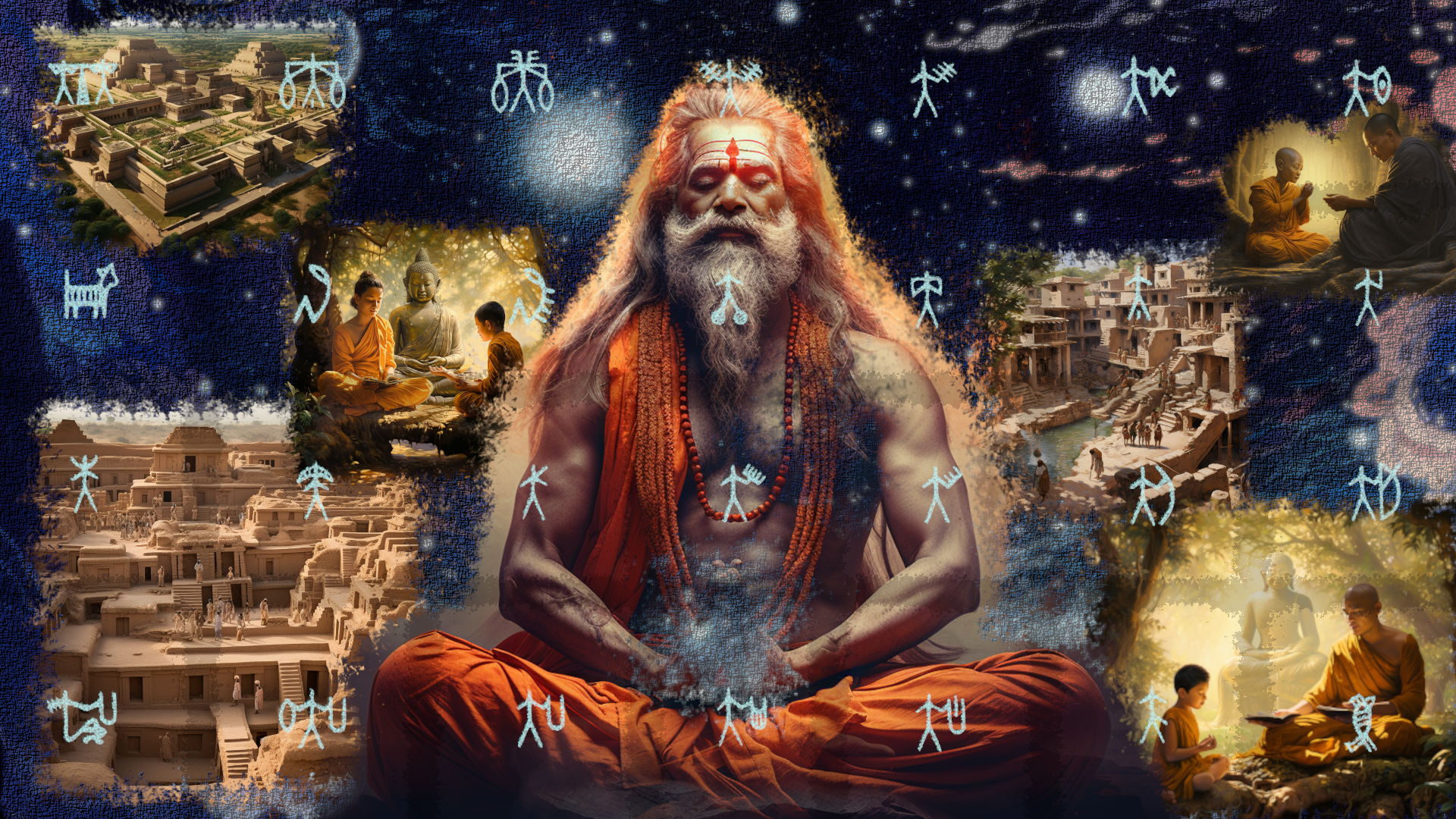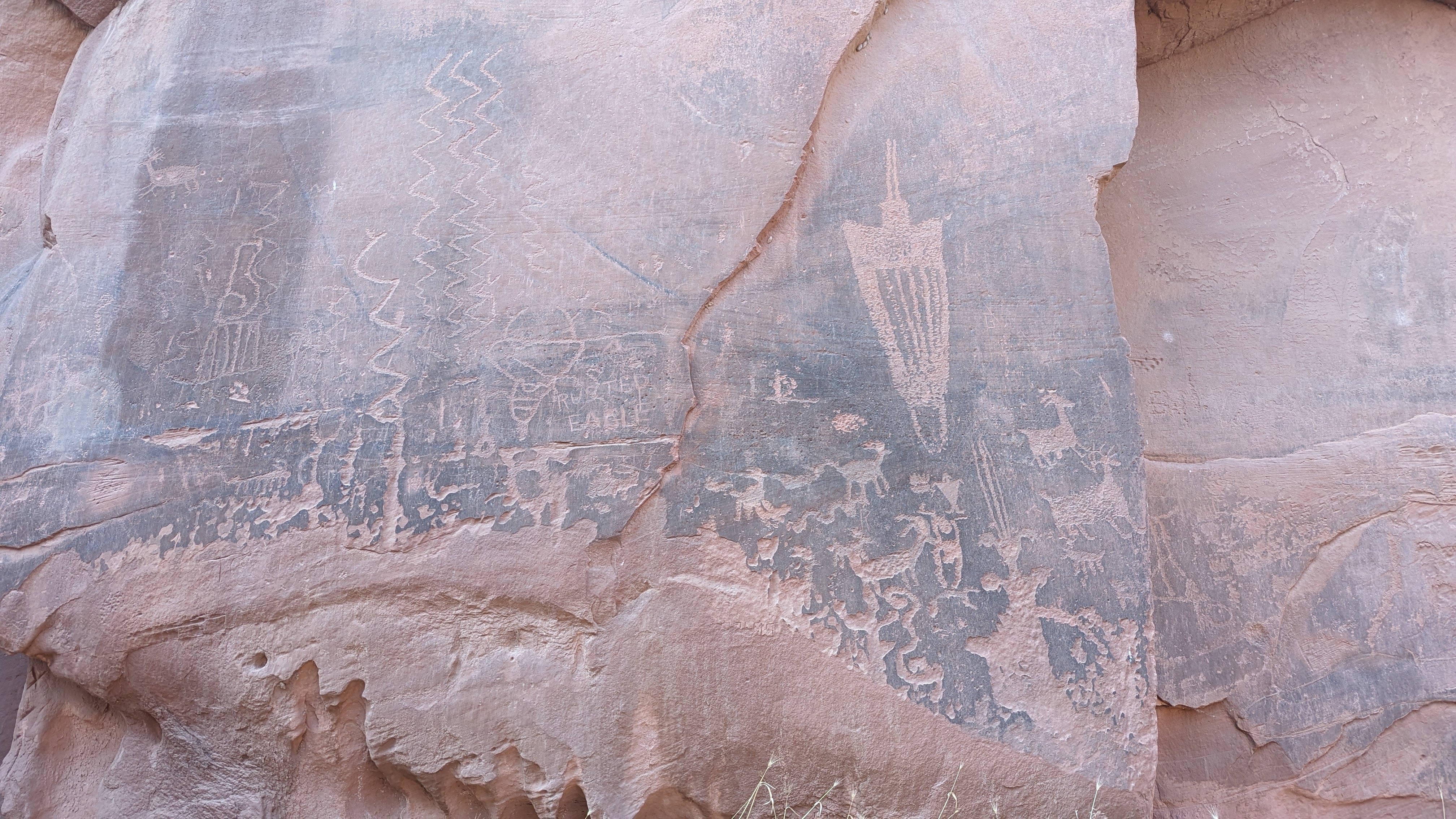Buddhi
Gallery | Links:

The Harappan civilization, dating between 2600 BCE and 1900 BCE and often referred to as the Indus River Valley civilization, is regarded by many Hindus as their ancestral civilization. Although much about this civilization remains elusive, the iconography found on some seals is interpreted by scholars as depictions of deities such as Shiva and Indra. Many Indic scholars assert that the civilization extended along the Saraswati river, utilizing its flow for trade and travel. Numerous excavation sites along this river reveal preserved evidence spanning from the pre-Indus Valley phase through both Early and Mature Harappan periods.
The region’s history stretches even further back. Settlements like Mehrgarh in modern-day Pakistan provide evidence of life during the Neolithic period. Serving as a pivotal archaeological site in South Asia, Mehrgarh chronicles the evolution from early farming villages to complex societies, culminating in the Indus Valley Civilization. Discoveries at Mehrgarh include early farming practices, domesticated animals, and mud-brick structures. As time progressed, this Neolithic society evolved, evidencing continuous habitation and cultural growth that eventually integrated into the expansive Indus Valley tradition.
The Harappan civilization, although reaching its mature phase around 2600 BCE, has roots extending back several millennia, with places like Mehrgarh standing as key milestones. This civilization was ahead of its time, marking an epoch of exceptional urban development. Distinctive features include:
Extensive Urban Planning: Cities like Mohenjo-Daro and Harappa were well-planned with wide straight streets, arranged in a grid pattern, suggesting advanced urban planning and civic organization.
Advanced Drainage System: They had an impressive drainage system with covered drains running alongside roads, and homes had indoor plumbing with toilets and baths, indicating a high regard for sanitation and hygiene.
Uniformity in Bricks: The bricks used throughout the civilization were of a standardized size, implying a level of administrative control or agreed-upon standards.
Still Undeciphered Script: The Harappans had their script, which remains undeciphered. This script was inscribed on seals, pottery, and other artifacts, but without a bilingual text (like the Rosetta Stone for Egyptian hieroglyphs), decoding it has been challenging.
Trade Connections: The Harappans engaged in extensive trade, both overland and maritime. Goods and raw materials such as lapis lazuli, which is not native to the region, indicate connections as far away as present-day Afghanistan and beyond.
The Great Bath: One of the most notable structures in Mohenjo-Daro is the “Great Bath,” a large public water tank with steps leading down from either side. Its precise function remains a subject of debate, though it might have had religious or ritualistic significance
No Evidence of Palaces or Temples: Unlike other ancient civilizations, there is little to no evidence of grand palaces, temples, or monumental structures dedicated to rulers or deities. This fact leads to many speculations about the sociopolitical and religious nature of the Harappan society.
Unique Seals: The Harappans made seals, usually out of steatite, depicting various animals like the unicorn-like bull, elephant, rhinoceros, and tiger. The purpose of these seals is not entirely clear but they might have been used in trade, as amulets, or for some form of identification.
बुद्धि
Saraswati is the Goddess of knowledge, music, art, speech, wisdom and learning. It’s no coincidence that ancient Hindus named the mighty river that facilitated the spread of knowledge and culture after her. Because of what the river offers, it made the most sense for humans to begin settling near it. The term ‘Buddhi’ (बुद्धि ) originates from ‘Budh’ (बुध् ), symbolizing awakening, consciousness, and awareness. ‘Buddhi’ बुद्धि represents discernment, intelligence, and the capacity to comprehend and reason.
Civilization can’t develop without Buddhi (बुद्धि). Progress hinges on the ability to capture, compound, and convey knowledge. This underscores the centrality of language, an organized expression of thought and a testament to enduring intelligence.
The piece above uses real undeciphered Harappan script to represent this theme specifically. While I’ve yet to witness the ancient Harappan ruins firsthand, I recently explored some petroglyphs in Utah, and the experience was simply riveting.
Here are few pictures of another ancient societies iconography. It’s truly amazing how their images and messages can still be here after many millenia of change. But keep in mind, their message isn’t as lost as it is replaced. They are now profound statements of their existence, self-awareness, and Buddhi (बुद्धि ).

